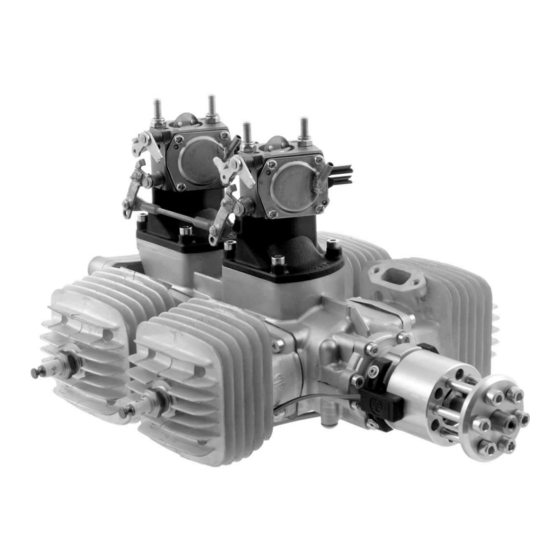3W 112i QS 매뉴얼 - 페이지 7
{카테고리_이름} 3W 112i QS에 대한 매뉴얼을 온라인으로 검색하거나 PDF를 다운로드하세요. 3W 112i QS 20 페이지.

112i B4 / QS Engine Manual
through the cylinder(s) fins. The freely flowing, but directed and turbulent air between the fins
provides the maximum cooling for an air cooled engine. Without baffling (meaning wood or
composite dampers that direct the airflow) the air will take the path of least resistance. Some
incoming air will bounce off the cylinder(s) and the rest will escape around the cylinder(s) without
coming into contact with the cylinder(s).
Engine in pusher operation:
Important note! When engines are used operating in pusher configuration cooling gets critical and
special attention has to be given to an effective cooling method. A good cooling system layout
depends on the actual location (position) of the engine in the fuselage.
Operating temperature
The normal operating temperature range for your engine is 176-212 Fahrenheit (80-100 Celsius).
If the temperature of the engine rises above 230 degrees Fahrenheit the engine is in an overheated
condition where sealed ball bearings and needle bearings could be damaged. Further, you risk
an elongation of the heated engine parts, and / or having an oil film build up, which could lead to
a seized piston or pistons. Following the instructions and recommendations in this manual will
keep the engine operating comfortably within the normal temperature range.
Rear induction
Carburetors, whether front or rear, require a steady supply of fresh air. The best way to supply
air to a rear carburetor is by installing an air scoop. Some have thought to drill holes into the
fuselage near the carburetor area rather than creating an air scoop for the carburetor. This does
not work, it fact it will create a vacuum effect that will draw the air away from the carburetor! Again,
you should install an air scoop into the front of the plane which will supply air into the fuselage.
This air will then need to flow out of the fuselage. Drill exit holes into the rear area of the fuselage
for this purpose. Important: The interior of the fuselage must be sealed to prevent damage from
gasoline that sprays from the carburetor. Use a thin epoxy or other appropriate fuel proofing
method. Do not overlook this step as gasoline will melt some materials like Styrofoam very quickly.
more infos: www.3w-modellmotoren.com
